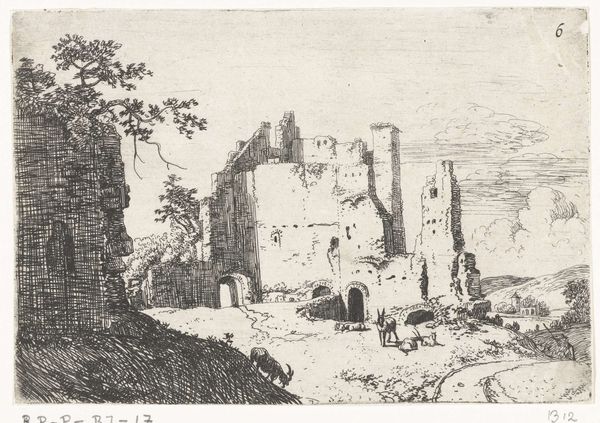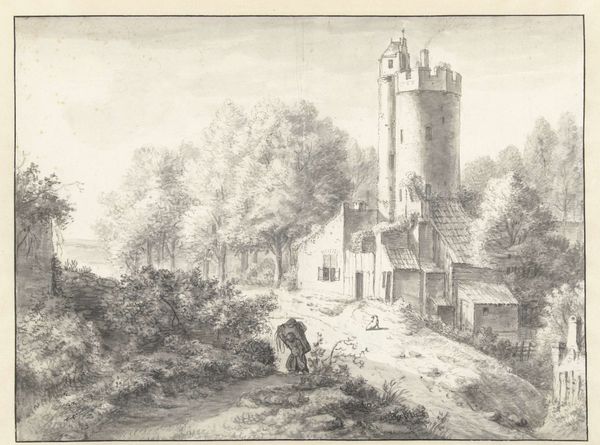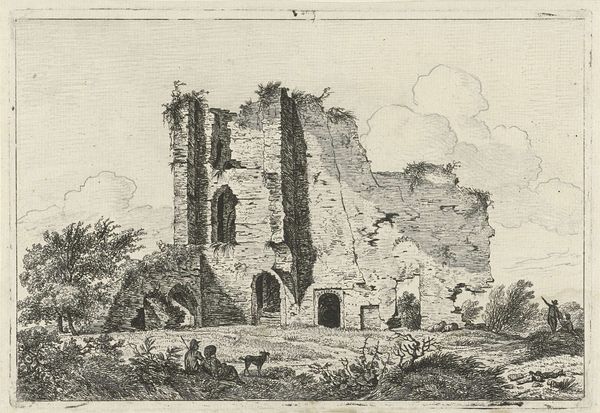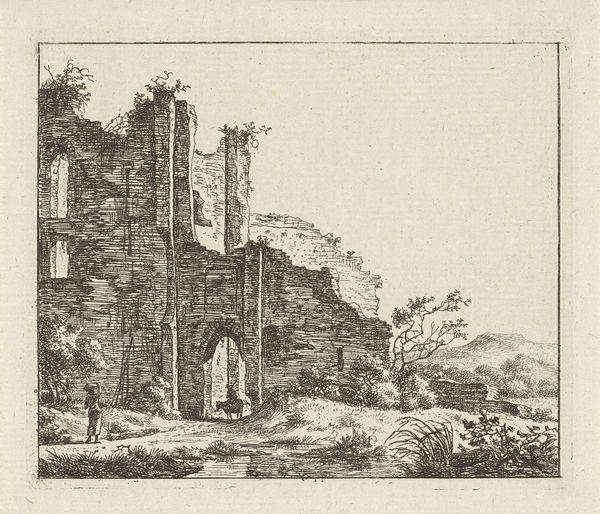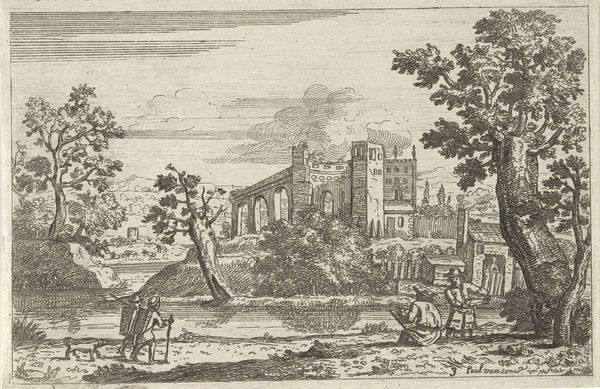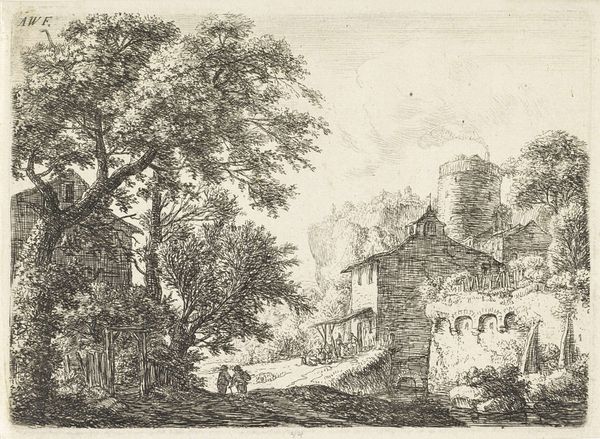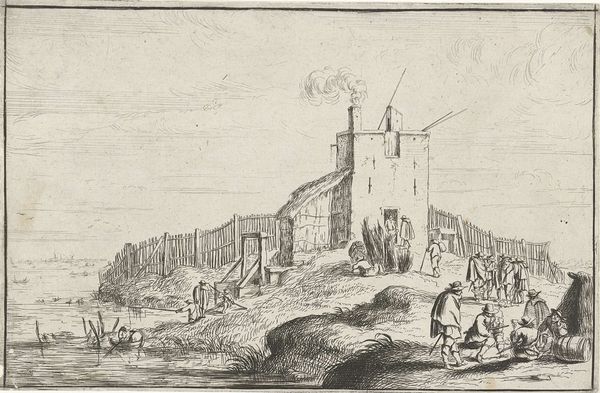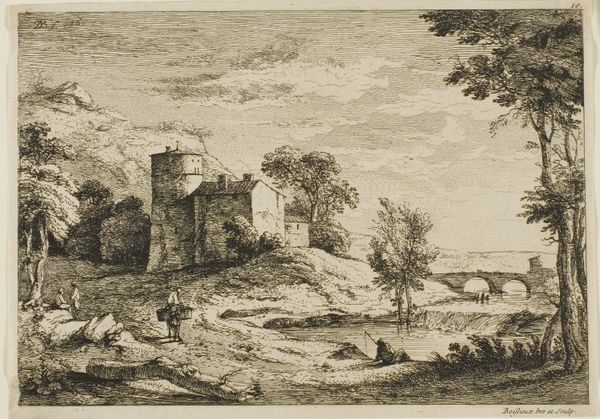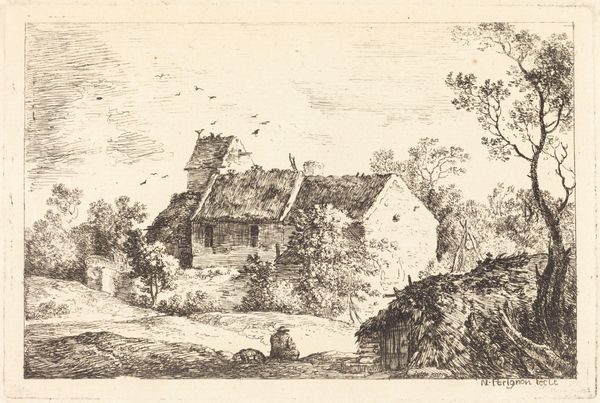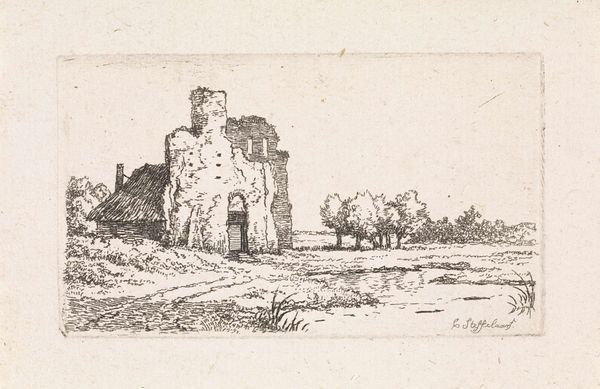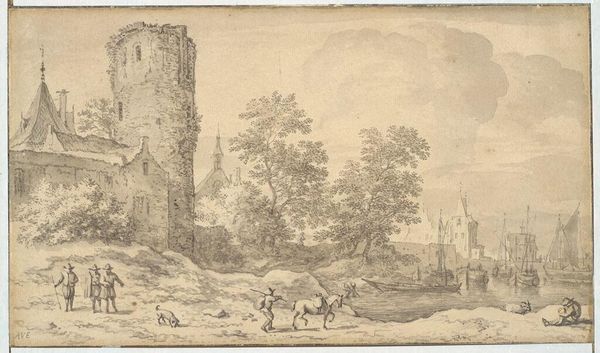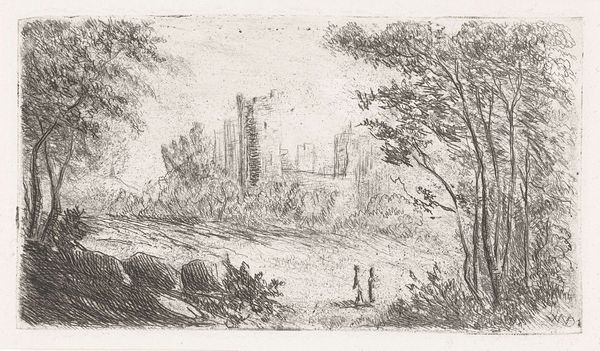
print, etching
# print
#
pen sketch
#
etching
#
pencil sketch
#
old engraving style
#
landscape
#
figuration
#
romanticism
#
line
Dimensions: height 184 mm, width 254 mm
Copyright: Rijks Museum: Open Domain
Frédéric Theodore Faber made this etching, "Herderin bij ruïne", meaning Shepherdess at a Ruin, in 1805. It’s created through a chemical process - acid biting into a metal plate, to hold ink - and then a mechanical one, pressing the plate onto paper. The contrast between the pristine, untouched paper and the dark, precise lines of the etching give the work a striking visual quality, lending it a graphic immediacy. Consider how the artist uses line to convey the texture of the stone ruins, the softness of the foliage, and the forms of the figures. Etching was a relatively democratic medium, allowing for the wide distribution of images. In this case, it presents a romanticized view of rural life. The woman tending her animals, the crumbling architecture – all speak to a longing for a simpler, pre-industrial past. Yet the very means of producing this image – through industrial materials and processes – ties it to the modern world it seems to critique. So, when we consider this print, let’s appreciate the skill involved in its making, and also the social context that gives it such resonance.
Comments
No comments
Be the first to comment and join the conversation on the ultimate creative platform.
